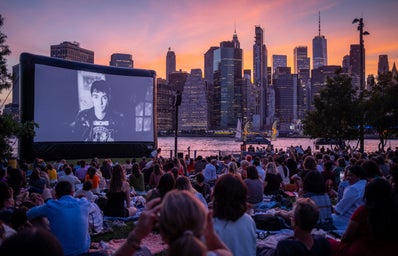Literature has acted as a means to connect with the world for thousands of years, and by being such a huge part of individual, national, and human identities, it has remained one of the most important sources of learning and scholarship. Written texts are often considered the most valuable among academics and critics, but it is important to consider the ways in which stories are being told through the various multimedia forms that exist today. For over a hundred years, the film industry has been growing, influencing, and altogether changing the ways that audiences experience stories and information — and yet it is considered entirely separate from traditional literature. The rift between written literature and film has created a negative stigma for those who seek to use literary themes, concepts, and theories to study cinematic texts. However, the book is not always better than the movie.
The author and the director attempt to make the same moves with their texts — they not only want to create an experience for their audiences, but also attempt to use their media to make their audience understand something. Whether through textual or visual imagery, creators are capable of framing stories in specific ways to lead people to certain conclusions. Films routinely use literary elements to forward the story, featuring healthy doses of symbolism, foreshadowing, and allegory among others. The similarities are endless, even down to the plot structures — Freytag’s Pyramid can be seen in so many of our favorite films and texts alike. Why, then, do we not consider film itself to be a form of literature?
Cinema is, indubitably, a form of cultural discourse — just as textual literature is. It seeks to tell stories, but also to comment on the social and political moment, to reflect beliefs, to recount our histories and more. Perhaps part of the avoidance comes from readers who believe highbrow literature from the canon is the only acceptable form of cultural discourse; in many ways, film is commonplace. It does not necessarily come with an academic barrier that can be used to enact superiority. Not everybody reads these kinds of texts, but everyone can engage with cinema, and almost every person believes they can speak to the facets of film; while this is not entirely true, the connotation of film as the everyday makes it feel separate from academia. When one begins to look at cinema through a literary lens, it becomes more clear that the industry is, in effect, seeking to achieve the same goals as many other forms of literature.
Just as with literature, there are a great many genres — some of intrinsic scholarly value, and some that feel more like “fluff,” for lack of a better word. As we increasingly accept the less highbrow forms of literature into academia, such as young adult texts and romance novels, scholars are opening the door for film to be explored in the same realm. When will academics begin to realize that a book like Twilight is to Moby-Dick what films such as Thor: Ragnarok are to those like L’avventura? There are “academically significant” texts (though it is worth noting the cultural and social significance of even the “academically insignificant” texts and films) in both mediums, and differentiating these is crucial to realizing the full scholastic potential of the cinematic canon as a part of the literary.
Studying film through the application of literary theory can open the doors to many significant findings and understandings of human nature/ideals, and there is no shortage of examples. Imagine the significance of a cultural study on a film like The Birth of a Nation and its contribution to racial segregation and atrocities in the United States. Consider the psychoanalytic criticisms available in A Clockwork Orange, with the amorality, classical conditioning, and more. Or the feminist theory in Carrie, a clear view into misogyny in horror! The list could continue forever, and applying literary theory — or at least acknowledging the strong and clear relationship between literary theory and film theory — is extremely simple.
Furthermore, the exploration of plays and theatre as literature suggests that there should be a direct through-line to the study of film. Studying the scripts of Shakespeare and Marlowe, or even more contemporary playwrights like Tony Kushner, as texts is no less valid than studying Italian Post-Neorealist films or Hollywood’s finest. They both combine the textual — through dialogue, setting, stage directions, and more — and the visual — with staging, lighting, setting, etc. The mere fact that there are text-to-stage and text-to-film adaptations should be enough to understand the abilities of each to achieve the same goal, albeit in different modes. This is not to mention those texts that go through the full rotation of all three, like Les Misérables.
Ultimately, the significance of film on our culture and society makes it incredibly important to analyze in both personal and academic territories. Though literature has been around much longer, the age of the film industry and its ability to connect with the “common” and the “everyday,” does not make literature more or less important, legitimate, or academically significant. Film studies are incredibly important to our current social and cultural moment, and the cinematic should be included as part of the literary canon. Film in the 21st century is literature, and it should be treated and studied as such.


